Twenty years ago, two notebooks written by Charles Darwin mysteriously disappeared from the Cambridge University Library. One of them contained Darwin’s hand-drawn depiction of an incomplete version of the famous “Tree of Life”. After years of searching in vain for the whereabouts of the two notebooks, it found its way back to the Library thanks to a mysterious figure.
On December 27, 1831, Charles Darwin set sail on the ship HMS Beagle as a naturalist in the crew. The purpose of the voyage was to redraw the coast of South America, and Darwin would be responsible for collecting and recording samples that the crew encountered. In addition, he set foot ashore every time a ship docked, studying the geographical features of the local area.
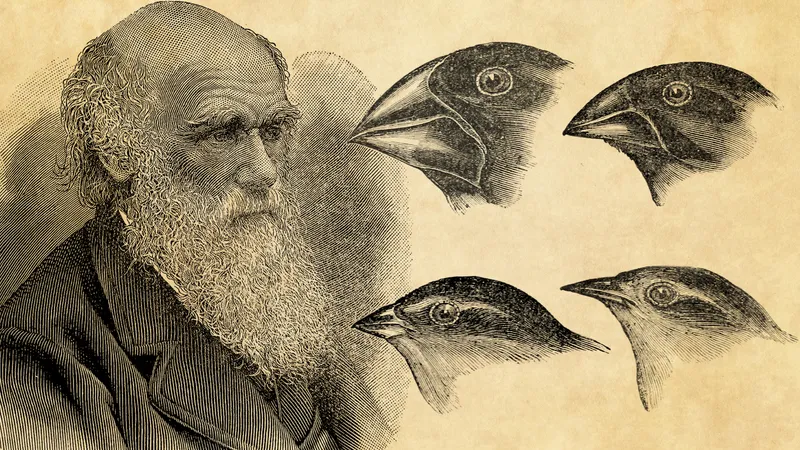
Sir Darwin recorded all his observations in the notebook he always carried with him. The voyage was supposed to be over in two years, but in fact it took five years of the eminent naturalist’s life. Along the way, Charles Darwin also sent many of his discoveries back to England, enriching the knowledge base for researchers back home.
On October 2, 1836, the Beagle ended its voyage at Falmouth, Cornwall. After a family visit, Charles Darwin returned to Cambridge and immersed himself in the specimens the team brought back. In March 1837, Darwin had some important evidence in his hand, enough for him to conjecture that animals change their appearance over time, turning into other species.
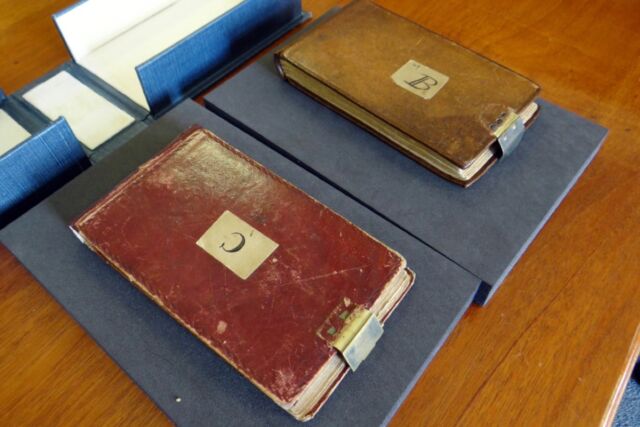
Darwin’s two notebooks.
In the summer of 1937, Darwin wrote down the idea of the life cycle of organisms as well as the different characteristics of each generation of organisms. He believes his theory can decipher the strange biodiversity of the famous Galapagos Islands.
That’s when Darwin sketched the Tree of Life in notebook B, roughly describing a single evolutionary tree, but still concluding that “It’s weird to talk about one animal standing taller than another“. More than 20 years later, Darwin provides an overview of his Tree of Life concept in his book The Origin of Species.
At Cambridge University Library, Book B containing an early version of the Tree of Life is housed with Book C in a green box, hidden among countless precious documents of mankind. They are collectively known as “The Mutant Notebooks”, which are valued at many millions of pounds.
In September 2000, people brought two notebooks out to take pictures. But in January 2001, they discovered that the blue box containing the priceless texts had disappeared. The initial theory was that the librarian had misplaced the box, but a 20-year search remained fruitless; The document storage room itself also contains millions of documents, making the search more difficult.
Under a new management, a new search team conducted another review of the documents in 2020, only to conclude that two priceless notebooks may have been stolen.
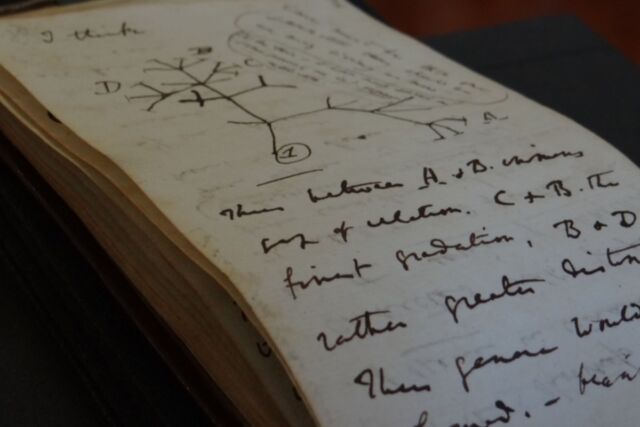
Darwin’s autobiography, next to an early version of the Tree of Life.
The Cambridge University Library decided to announce the incident to the entire community, asking the holder to return the books to the library. They also informed the police, in order to list the two notebooks into the PSYCHE data management system, used by Interpol to store stolen artworks. This action also ensures that the global book exchange community is immediately notified when the two books are exposed; Darwin’s autographs are so unique and valuable that they cannot be publicly traded or sold.
Fifteen months after that, a small parcel appeared outside the office of librarian Jessica Gardner, manager of the Cambridge University Library. A brown envelope with the words “To Librarians, Happy Easter“. Inside the envelope is a blue document preservation box, containing two priceless notebooks wrapped in a thin layer of plastic.
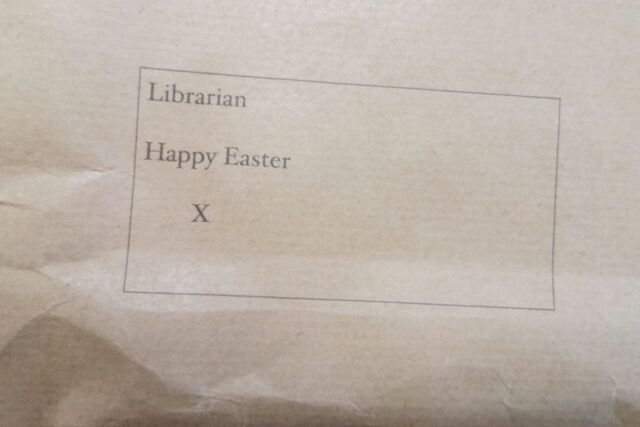
The outside of the mysterious envelope.
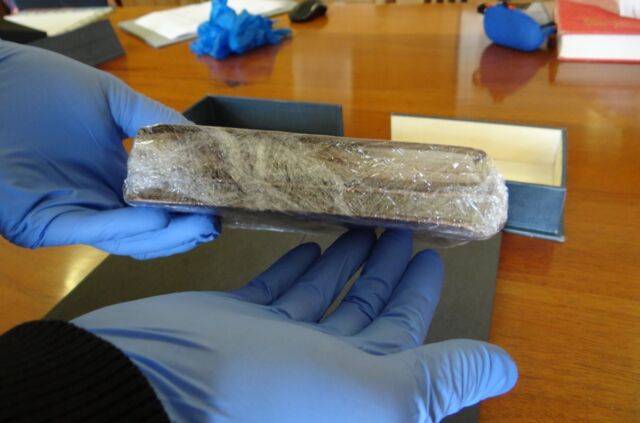
Someone took the trouble to seal two priceless notebooks.
Excited by the return of the two books, the Library decided to display two books at an exhibition called Conservation of Darwin, which will be open for free on July 9.
“I am overjoyed when the two notebooks are safely home, next to the University Library’s Darwin Archives.”, said vice president Stephen J. Toope of the University of Cambridge. “Items like this play an important role not only in the history of science, but also in human history“.
Librarian Gardner assured the public that the two notebooks would be carefully guarded under more layers of security. The library has also been upgraded around the time the “pets” went missing: now the bookstore has a more secure room, a CCTV system everywhere, a more reputable security system, now there is a There’s even a new reading room for professionals.
“The privacy policy is also much different than it was 20 years ago.” librarian Gardner confided. “Today, any item that disappears will be on the list of possible stolen items, and an extensive search will begin shortly.”“. At the present time, the police are looking for the identity of the individual and organization that returned Darwin’s Autograph Library.
According to Arstechnica
